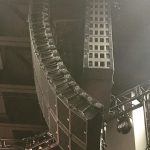
QuickTips – Avoiding the EQ Loop

I have some quick tips today on EQ’ing that kind of piggyback on my recent tip about too much EQ.
One of the things I see that leads engineers to use too much EQ is to get stuck in an EQ loop. They EQ one area, and then another, and then back to the previous area or really close to it, then back again and on and on and on. Before long there is so much EQ happening that the same result could have been achieved by pulling the fader down.
So, before you touch a knob, identify your problems to begin with. You don’t need to be spot on with frequencies, but you should be able to tell what the big, hairy issues are to begin with and the frequency range they’re in.
Is it muddy? Is it harsh? Is it both? Is there something ringing in it? In my experience, there are rarely more than two issues at this point before you have applied EQ.
When you know what the issue or issues are, you have your EQ marching orders. Hit those and then don’t do anything.
If you still feel like you need to do something else, check it against what you’ve already done.
For example, if you pulled a bunch of lows and/or low-mids and the vocal is harsh now, what happens if you put some of that stuff back?
Keep in mind through this process that if you can’t get things stable and are constantly bouncing back and forth between two areas, you might have a dynamic issue and a static EQ is not a solution for a dynamic problem. You need a dynamic EQ, and if you don’t have one you may just have to compromise.
Another thing that may lead to an engineering EQ loop is using the wrong filter width.
So, before you EQ something, are you hearing tonal issues or resonance issues? Sometimes they can be one in the same, but for my ears they are usually separate.
When I think of tonal issues I’m thinking in terms of something sounding muddy or harsh where there’s an overall descriptive quality to what I’m hearing that I don’t like. When I think of resonance issues I’m thinking more in terms of a distinct tone or note or frequency that is sticking out. Sometimes this might also sound like a ring that hangs around almost like reverb.
In my opinion, a wider Q is better for tackling tonal issues. For me that’s usually a Q of 1.4 or lower on most EQ’s. I’ll use a narrow EQ to tackle the resonance issues. This would be a Q above 1.4 and probably in the 2 to 3 range.
Let’s consider a snare drum, for example. A common issue with snare drums–or any drum for that matter–is boxiness. I consider that a tonal issue so I’ll use a wider filter to tame it because a narrow filter won’t get the whole thing.
Some snare drums may also have a distinct ring that gets obnoxious. That ring is a resonance issue so I’ll use a narrow filter to knock it down because a wider filter would suck out some of the quality and tone of the snare.
It has been my experience that on a properly implemented loudspeaker system with properly mic’ed sources, there are more tonal issues with things than resonant issues.

 Previous Post
Previous Post Next Post
Next Post


